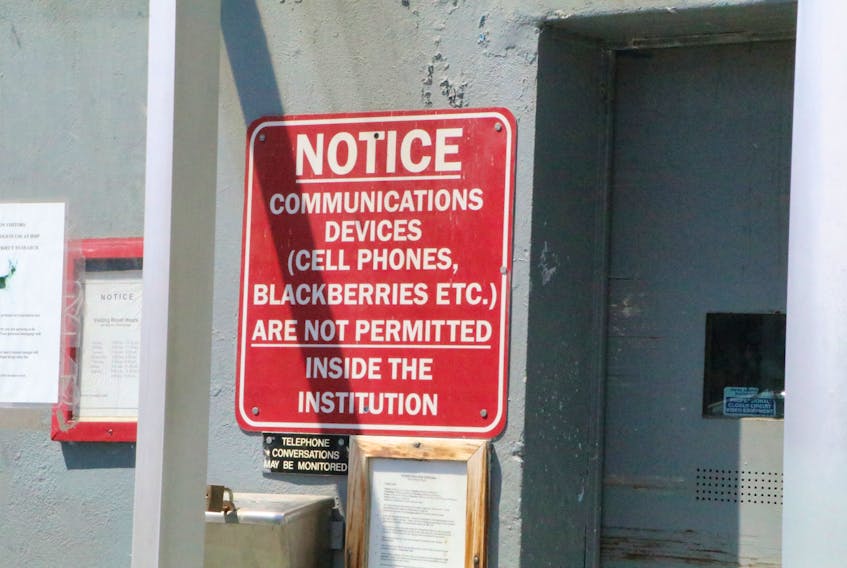As Her Majesty’s Penitentiary ages and becomes more crowded, officials are beginning to consider alternatives to incarceration as a solution.
“You can continue to build a bigger box, but if you are not doing anything to address the numbers that are there, you are going to have the same issues down the road,” said Justice Minister Andrew Parsons.
While other parts of the country offer initiatives such as adult diversion, bail supervision programs and restorative justice, those options currently don’t exist in Newfoundland and Labrador — but they are being considered for future implementation.
Right now, the options in this province involve traditional court sentencing, which includes a range of sentencing, from an absolute discharge to a custodial sentence, meaning jail time.
The one exception is in Conne River, where the Miawpukek First Nation Healing and Sentencing Program uses restorative justice and community-based sentencing practices.
The province is looking at implementing similar restorative justice approaches, and Nova Scotia is providing a model of how to do that.
IN DEPTH: The Telegram's full report on HMP
At the end of June, representatives from the provincial Justice Department, provincial court, Royal Newfoundland Constabulary and the RCMP, and a representative from the Miawpukek First Nation, were in Halifax participating in the Collaborative Learning Conference on the Acceleration of the Use of Restorative Justice in the Criminal Justice System, “which we hope will provide us with a framework to move forward with restorative justice initiatives in Newfoundland and Labrador,” the Justice Department stated in an email.
In Nova Scotia, the Restorative Justice Program’s website tells success stories of communities, victims and offenders coming together to heal the harm done by crime.
According to the program’s website, “Restorative justice is a response to crime that focuses on restoring the losses suffered by victims and communities. It holds offenders accountable for the harm they have caused … (and) helps victims and their families get the closure and support they need to heal.”
With restorative justice, the response to a crime involves mediation between the victim and the offender and sometimes the wider community, with the goal of finding a resolution that satisfies the needs of all parties.
Generally, it involves having all parties discuss what happened and what is needed in order to address the harm done.
It’s something Parsons said he’s passionate about implementing.
“There’s a better way of finding justice, and it’s not new — I mean, we’ve been doing this in Indigenous cultures for years and years, and you see it ongoing now down in Conne River with Chief (Misel) Joe and his people, and I’ve had a chance to visit him and it’s amazing, and that’s just one concept. So, that’s where our mindset has been.
“It’s not about being soft on crime, it’s about recognizing the fact that our approach right now doesn’t always work and that there are different approaches — it’s not just the one size fits all. There are different approaches we can take that may be better for everybody.”
Another example of using alternatives to incarceration is the Hollow Water First Nation in Manitoba, which has a program called Community Holistic Circle Healing that uses restorative justice principles.
Looking at just one 10-year period of the program, it not only saved government more than $3.2 million and kept more than 50 offenders out of prison, but the community experienced improvements overall, including changes such as a decrease in alcohol abuse, an increase in life expectancy and an increase in high school graduates.
“I think some more restorative justice practices could definitely be introduced (in this province) to divert people from the formal sentencing process … if they look at things like alternatives, like diverting them, whether it’s through options like circle sentencing or some sort of mediation-type programs,” said Denise Hillier, the director of clinical services with Stella’s Circle.
“I think there certainly could be savings from the system.”
Issues with incarceration
It costs about $110,000 to keep one person incarcerated for one year, and “incarceration in and of itself does not deter criminal activity,” said Cindy Murphy of the John Howard Society.
“If that was the case, every time someone went to prison they’d never return, but we know that’s not the case, and there’s high numbers of recidivists or people who are involved over and over again in the system.
“Obviously, there is a time when some people need to be taken out of the community and there is a place for incarceration for some folks, but there’s an awful lot of people who are incarcerated — especially the non-violent offenders — that could be safely managed in the community under supervision and allow them to have better access to the services that would address some of their criminogenic factors.”
The United Nations has a “Handbook of Basic Principles and Promising Practices on Alternatives to Imprisonment” that states the same point:
“If the primary objective is to attempt to ensure that offenders desist from future crime, there is no evidence that imprisonment does that more effectively than community-based alternative punishments. On the contrary, studies on the comparative impact of different forms of punishment on recidivism suggest that imprisonment makes it hard for offenders to adjust to life on the outside after release and may contribute to their reoffending.”
A crowded prison also causes problems for staff and inmates with increased tension and violence, and a lack of access to services when there are wait lists, said Dan McGettigan, director of Turnings, a program designed to help former inmates adjust to life outside prison.
“If the funding is there to incarcerate someone, perhaps we may be able to reduce some of that to take some of that money for less expensive programs in the community,” McGettigan said.
Parsons said these are all ideas the government is considering.
“In a time when we do have a difficult fiscal situation … we recognize the fact that we have to be smart, or we have to think differently, and sometimes that challenge and that pressure helps steer you in what could be a better direction.
“By doing something differently, you might get an actual better result. I don’t get many comments to the effect that the justice system works perfectly, so the fact that we’re willing to work with it, to try new things, shows that we’re trying to make it better.”
Working on alternatives
Parsons said a drug treatment court, which will take into consideration an offender’s struggles with addiction, is set to open this fall. The goal is to address addictions and health issues faced by offenders, and ultimately reduce recidivism and therefore decrease the number of people incarcerated.
He also said the government is looking at how it can implement restorative justice approaches, which would likely not require a financial expenditure, but rather a change of practice. It’s something he’s working with Crown attorneys on implementing.
Another component of the increasing numbers at HMP is that on any given day, about 60 per cent of the inmates are there on remand.
“They’re not even convicted,” said Murphy.
“They’re sort of languishing away there while they wait for their trial to come up, and something that could be happening here is they could be released to the community under supervision — some of them safely released to the community under supervision — to address some of their needs while they await court, as opposed to being incarcerated, and that would address some of the overcrowding issues and access to services (at HMP).”
A study on implementing bail supervision in the province is ongoing, and Parsons said because it would require funding, implementing it may have to go through a budget process.
Parsons said he’s passionate about making these changes.
“It’s not about being soft on crime, it’s about being smart on crime,” he said.
Parsons said he is unable to give a timeline on when any of the government initiatives involving bail supervision or restorative justice will be implemented, saying only “the work is ongoing.”
With files from Barb Sweet
Twitter: @juanitamercer_









